Water treatment 4.0, between artificial intelligence and predictive technologies
Focus
Focus
Category Facet
Custom Facet
Search Results
-
Web Content Article · By LUCIA ALGISI On Nov 29, 2023 2:30 PM
Early warning system with innovative FingerPrint technology to ensure safe water
Categoria Progetto: Water Project Innovation -
Web Content Article · By LUCIA ALGISI On Nov 29, 2023 12:21 PM
The pilot project involving the installation of Kamstrup meters was carried out in Conselice, near Ravenna, and yielded excellent results. The tests now continue in Modena, covering a larger area
Categoria Progetto: Water Project Innovation -
Web Content Article · By LUCIA ALGISI On Nov 29, 2023 2:35 PM
Discover the project for “removing and capturing” microcontaminants with recycled materials
Categoria Progetto: Water Project Innovation -
Web Content Article · By LUCIA ALGISI On Nov 29, 2023 12:05 PM
Hera continues experimentation of the innovative, fast and low-cost contactless system that uses space technology to detect water leaks in the network more quickly and productively
cosmicrays Categoria Progetto: Water Project Innovation -
Web Content Article On Mar 8, 2021 1:42 PM
Smarty, The new line of waste containers smarty.png no
-
Web Content Article On Mar 8, 2021 1:41 PM
Waste-to-energy plants: a resource for the circular economy /-/waste-to-energy-plants-a-resource-for-the-circular-economy waste-to-energy.png no
-
Web Content Article On Feb 2, 2021 9:41 AM
Innovation and sustainable future for our cities.
smartcity Categoria Progetto: Innovation -
Web Content Article · By Palvi Andrea Tonziello On Aug 4, 2020 5:25 PM
An investment of Euro 37 million. A plant that disposes of 100 thousand tonnes of organic waste produced by separate waste collection and another 35 thousand tonnes coming from green waste and...
circulareconomy Categoria Progetto: Heratech Project Innovation -
Web Content Article On Aug 4, 2020 5:20 PM
District heating is already in itself a "sustainable" and environment-friendly solution, because it can guarantee better performance than traditional domestic boilers. In addition, the plant...
Categoria Progetto: Heratech Project Energy Efficiency -
Web Content Article On Aug 4, 2020 5:14 PM
More than 130 thousand emergency response reports involving 1,500 employees in 2019. More than 50 thousand emergency response operations in the first six months of 2020, in a local area that...
utility4.0 Categoria Progetto: Innovation -
Web Content Article On Aug 4, 2020 5:12 PM
Since 2017, we have been developing a measuring system, conceived by Hera Luce, which analyses the materials used in public lighting. What's the target? Making their life cycle circular, as well.
Categoria Progetto: Energy Efficiency Circular Economy -
Web Content Article On Aug 4, 2020 5:08 PM
Producing electricity and heat from non-reusable waste. How? In a waste-to-energy plant: it's a safe and legally compliant plant and an energy resource for the local area.
Categoria Progetto: Energy Efficiency Circular Economy -
Web Content Article On Aug 4, 2020 5:04 PM
Waste can become sofas, lamps, games, and musical instruments. But even stage sets, art objects and installations. How? We'll tell you about it in this project.
Categoria Progetto: Circular Economy -
Web Content Article On Aug 4, 2020 5:02 PM
Thanks to robotics and artificial intelligence we can make our flows more efficient and develop the full potential of individuals and their intellectual capacities. With our Robotic & Intelligent...
utility4.0 Categoria Progetto: Innovation -
Web Content Article · By LUCIA ALGISI On Aug 4, 2020 4:49 PM
Rimini's beaches will be 100% fit for swimming thanks to the Rimini Optimised Seawater Protection Plan (Piano di Salvaguardia della Balneazione Ottimizzato - PSBO). Discover the most important...
psbo Categoria Progetto: Heratech Project Circular Economy Water Project -
Web Content Article On Aug 4, 2020 4:39 PM
How do we monitor 6,600 plants and over 67,000 km of networks? With our Forlì Remote Control Technological Hub, which monitors operation in real time to detect failures and malfunctions of...
utility4.0 Categoria Progetto: Innovation -
Web Content Article On Aug 4, 2020 4:32 PM
Fuel may also be extracted from vegetable oils. Used domestic vegetable oil (such as frying oil) which is recovered by multiutility services via roadside containers and drop-off points, is...
Categoria Progetto: Circular Economy -
Web Content Article On Nov 24, 2020 10:22 AM
The NexMeter Green project aims to take a further step towards the future by offering a product that is not only safe and innovative but also sustainable
-
Web Content Article On Aug 4, 2020 4:26 PM
We monitor the sewerage networks from high up on the European Space Agency's satellites to prevent any damage and take preventive action. Modena and Bologna lead the pilot project. Find out more.
Categoria Progetto: Water Project Innovation -
Web Content Article On Aug 4, 2020 4:21 PM
What's Ferrara's green secret? It's underground, where a geothermal basin feeds its district heating system. The result? 87% of the thermal energy distributed in the city is "clean" and we avoid...
Categoria Progetto: Innovation Energy Efficiency Circular Economy
Asset Publisher
Modena's smart purification plant is COSTANCE, the prototype of the purification plant of Granarolo dell'Emilia. Two outstanding examples of sustainable water resource management.
The watchword is innovation. To protect the environment and those who live in it, and to provide quality services.
That's always been our belief. But there's more. We need to add another watchword: resilience, the ability to cope with change. And when we speak of climate change, we have learned that innovation and resilience are inseparable. The most modern technologies allow us, in fact, to face sudden changes, turning to prevention, the ability to predict causes and consequences, acting in advance.
Following this principle, and as the second-ranking Italian operator in terms of volumes of water sold, we have earmarked Euro 830 million for smart technologies in our Business Plan for 2023. In fact, the networks and plants of the water cycle are subjected to increasing stress due to the ongoing climate change, and only our ability to adapt and innovate, has made us an Italian excellence in the industry.
The investments we have made are 20% higher than the Italian average - almost Euro 176 million in 2019 alone – and reaffirm our commitment to a circular and regenerative economy, starting with water.
In particular, by complying with the requests of the United Nations Global Compact on the sustainable management of water resources, we remain committed to continuously innovate the service to achieve its gradual decarbonisation. This happens not only by using only renewable energy but also through energy efficiency projects and optimisation of the processes involved in the treatment.
There are two virtuous examples we are particularly proud of, the Modena treatment plant and that of Granarolo dell'Emilia (Bologna).
THE SMART TREATMENT PLANT IN MODENA
Blue water, clear water. This is the refrain that welcomes to Modena's smart treatment plant. Its new predictive system, unique in Italy, enables us to improve the quality of the water we return to the environment and to further reduce the energy consumption of our wastewater treatment plant.
Here, technological innovation, integrated systems, and efficient use of resources are at the forefront.
The project, developed together with Energy Way (the company that develops mathematical models for the efficient and sustainable development of businesses), created a system capable of controlling the oxidation process, a fundamental phase of the wastewater treatment cycle, anticipating the needs of the plant's activities. In fact, the requirements vary according to the water flow rate and the concentration of organic pollutants. The smart controller anticipates, 30 minutes in advance, the condition of the plant and acts beforehand to avoid the concentration of pollutants or energy peaks.
The pilot project has yielded positive results, which we are proud of. The Modena treatment plant, which can cope with the needs of 500,000 inhabitants, recorded a 16% decrease in energy used in the oxidation process, compared to a traditional control system, and a further 8.1% decrease in the presence of nitrogen in the outgoing water (a parameter already below the regulatory limits).
WELCOME TO CONSTANCE, PROTOTYPE OF THE GRANAROLO DELL’EMILIA TREATMENT PLANT
It's just been born, but it's looking very promising. We are talking about CONSTANCE (COntrollo iNtelligente e geSTione Automatizzata per il trattameNto di aCque rEflue). The system is the fruit of a partnership between Hera Group and ENEA (Ente per le Nuove tecnologie, l'Energia e l'Ambiente), is based on machine learning technologies, and can reduce energy and water treatment plant management costs by more than 30%. The prototype has reached a level 7 technological maturity and is ready for industrialisation; the first tests were successfully carried out in our treatment plant in Granarolo dell'Emilia (Bologna).
CONSTANCE's main innovative feature enables us to remotely manage multiple treatment plants and to estimate in real-time the percentage of pollutants entering the plant, such as nitrogen, reducing them and thus returning cleaner water.
"At Hera, we place technological innovation among the fundamental pillars of our management and development strategy. With this in mind, in 2017 we formed a partnership with ENEA to build projects of common interest," says Franco Fogacci, Water Director of Hera. "The experimental test project of ENEA's CONSTANCE controller at our treatment plant will allow us both to further develop skills, know-how, and transfer new technologies into real applications on an industrial scale, for the benefit of citizens and the environment", he concludes.
Search Bar
Tag Facet
Search Results
Asset Publisher

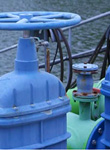
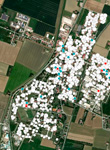
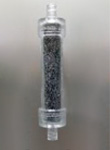

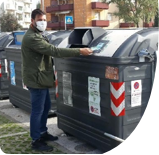
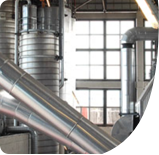

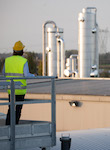

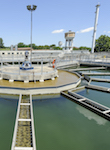




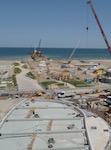
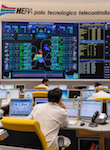
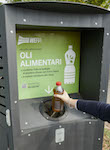
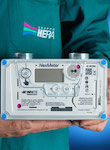



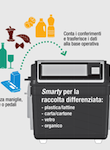
.jpg/468d051b-ba80-83a6-359d-7ef55eefd940)
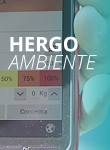
.jpeg/1d0e0770-1094-b22b-fce4-099f27c72978)